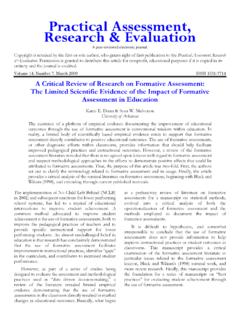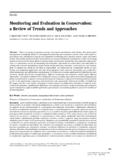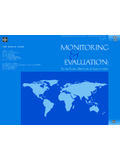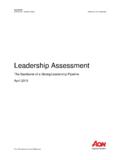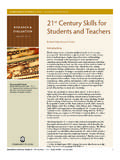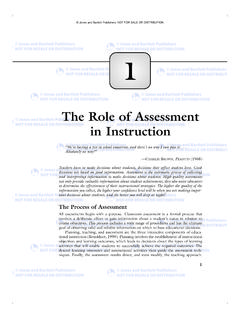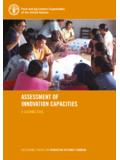Transcription of Cash Tra nsfers - WHO
1 Cash Tra nsfers Evidence Paper Policy Division 2011 Front Cover photo: Massi, aged 4, with a toy mobile phone, in Korogocho, Nairobi DFID is working in Korogocho, an informal settlement in Nairobi, Kenya in partnership with Unicef and the Kenyan Government, to improve the lives of orphans and vulnerable children through a simple cash transfer scheme. The scheme gives very poor families 3000 Kenyan shillings (about 25) every two months, for help with basic household expenses. Image copyright: Caroline Irby DFID Cash Transfers Evidence Paper April 2011 Contents Introduction 4 Contents Executive Summary Acronyms and abbreviations Chapter 1 Introduction Purpose and structure of the Conceptual framework for reviewing the The expansion of cash transfers in developing Chapter 2 Evidence of the impact of cash transfers by objective Reducing poverty and Human Cash transfers and Empowerment and gender
2 Humanitarian State-building and social Climate change adaptation and disaster risk Chapter 3 Evidence on design and implementation choices Unconditional and conditional cash Public works and employment guarantee Targeting System design: integrated Payment Institutional Complementary Fragile Promoting gender equality and women s Climate change Domestic political Cash transfers in policy Contents Chapter 4 Evidence of affordability, cost-effectiveness and financing Costs and benefits: data and methodological ..67 ..73 ..74 Chapter 5 Delivering results and building the evidence base Demonstrating results strengthening monitoring and Building the wider evidence Chapter 6 What role for DFID?
3 Bilateral International Research and Working with partners for evidence generation and Annexes Annex 1 Social protection: definition, instruments and Annex 2 Timeline of DFID s contribution to building the evidence base on cash Annex 3 DFID-supported research on social protection: key findings and themes from four Research Programme Consortia (RPC)..95 Current levels of spending and fiscal for guiding cash transfer options for increasing spending on cash transfers Executive Summary Executive Summary i ExecuThis paper provides a synthesis of current global evidence on the impact contexts, o direct, regular andor and vulnerable households to raise and smooth incomes.
4 The term encompasses a inal pensions, child grants or public works programmeptions. While the ty and vulnerabilitytribute directly or inle for cash transfers The theoretical case for transfers is straightforward. While poverty is multi-dimensionaModest but regular incomption and sustain without the need ton help households to build human capital (by investing in their children s nutrition, health and education), save up to buy productive assets, and obtain access to credit on better terms. Cash transfers can thus both protect living standards (alleviating destitution) and promote wealth creation (supporting transition to more sustainable livelihoods).
5 Depending on context, they may also help prevent households from suffering shocks and transform relationships within society, and between citizens and the state. Over the past 15 years, a quiet revolution has seen governments in the developing world invest in increasingly large-scale cash transfer programmes. These are now estimated to reach between and 1 billion people. While this expansion began in middle-income countries (MICs), governments in low-income countries (LICs) have also started to develop cash transfer programmes.
6 This rapid spread has been driven by a range of forces. Firstly, there is growing recognition that while global economic integration brings poor households opportunities, it also brings increased exposure to stresses ( volatile food and fuel prices) and shocks which can push many into poverty. In this context, transfers are seen to play a role in reducing transitory poverty. Secondly, there is growing evidence that transfers can help people escape chronic, often inter-generational poverty; in part by leveraging gains in non-income, human development outcomes, accelerating progress towards Millenium Development Goal (MDG) targets.
7 Finally, there is recognition that in situations of chronic food insecurity ( Ethiopia), institutionalised transfer programmes are more efficient and effective than repeated annual emergency food aid. tive Summary of cash transfers in developing countries, and of what works in different r for different development objectives. Cash transfers are predictable non-contributory cash payments that help porange ofstruments ( socis) and a spectrum of design, implementation and financing oprimary purpose of cash transfers is to reduce pover, the evidence shows that they have proven potential to condirectly to a wider range of development outcomes.
8 Rational, low and variable income is central to the problem. me from cash transfers helps households to smooth consu spending on food, schooling and healthcare in lean periods sell assets or take on debt. Over time, transfer income ca Executive summary Executive Summary ii Evidence for multiple forms of impact Cash transfers are one of the more thoroughly researched forms of development intervention.
9 Latin American countries that pioneered the current generation of cash transfers built in best-practice monitoring and evaluation (M&E). The association of cash transfers with high quality M&E and impact evaluation has continued as cash transfers have spread, but remains less developed in low-income countries. While the evidence base for cash transfers is better than for many other policy areas, it is also uneven. Less is known about some instruments (public works) and outcomes in certain regions (sub-Saharan Africa). Capturing the full range of effects is challenging and variations in assessment methodology make systematic review complex.
10 It is possible to distinguish a hierarchy of knowledge, with declining robustness of evidence for some forms of impact relative to others. There is convincing evidence from a number of countries that cash transfers can reduce inequality and the depth or severity of poverty. For example, in Brazil a combination of cash transfer programmes accounted for 28 percent of the total fall in the Gini index (a summary measure of inequality) between 1995 and 2004. There is an increasing volume of research into how cash transfers might support graduation from poverty for those of working age.











